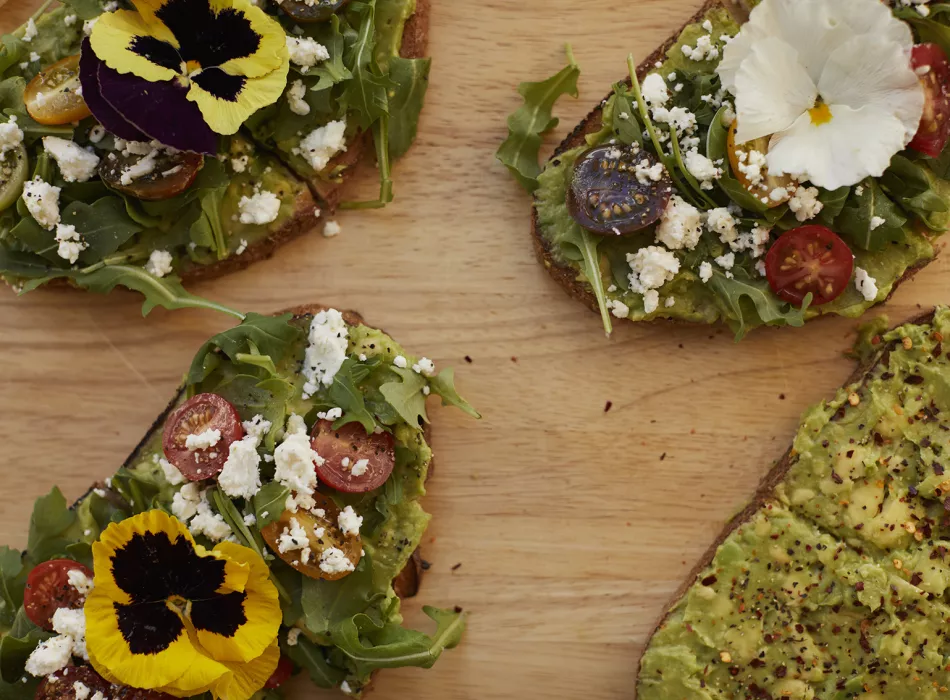






 Hawaiʻi Regional Cuisine
Hawaiʻi Regional Cuisine
Hawaiʻi Regional Cuisine
Cuisine of Hawaiʻi
It’s been said that a melting pot is not the most accurate way to describe Hawaiʻi’s multiethnic population. It’s more like a stew, where all the flavors complement and influence one another but the ingredients retain their richness and integrity instead of melting into an even sameness. Nothing tells the story of arrival, intermingling and reinvention of cultural traditions on the islands as deliciously as the variety of cuisines that make Hawaiʻi a foodie wonderland. It all starts with Hawaiʻi’s first people, the Native Hawaiians.
Stewards of an island chain in the middle of the Pacific Ocean, Native Hawaiians knew how to live sustainably. They partitioned segments of each island into ahupuaʻa (land divisions), where people were given the responsibility and privilege to manage the resources in their portion of the mountains, lowlands or ocean. The Hawaiians had a genius for engineering, constructing vast irrigation systems to supply water to terraced farms. They grew the “canoe crops” the first Hawaiians brought with them to the islands, including kalo (taro), uala (sweet potato), maiʻa (banana), kō (sugarcane) and ʻulu (breadfruit). The ocean provided a variety of fish, but it was the Hawaiians’ innovative construction of massive fishponds that allowed them to manage a constant supply. These were all standard ingredients in a simple Hawaiian meal, and many of them appear on menus in classical as well as new, fanciful renditions as chefs pay homage to the original cuisine of the islands.
The Birth of “Local” Food
Beginning in 1778, whalers, missionaries and traders arrived in Hawaiʻi, bringing cuisine from their homelands with them. Then, in 1852, waves of contract laborers started to come to Hawaiʻi to work on the sugar plantations. They brought with them traditional recipes and unique blends of ingredients from China, Japan, Portugal, Puerto Rico, Okinawa and the Philippine Islands.
It was only a matter of time before the culinary creations of these cohabitating cultures would interact with each other, exemplified in dishes that are now called “local,” such as a plate lunch of hot dog chow fun, macaroni salad and kimchi. These uniquely local combinations are undeniably comfort foods, even for diners who did not grow up eating them.
Local food spots to try: Hamura Saimin, Highway Inn, Rainbow Drive-In, Liliha Bakery, Da Kitchen, Café 100
Hawaiʻi Regional Cuisine
Following Statehood and World War II, Hawaiʻi’s visitor numbers grew, along with its hotel accommodations. Restaurants that catered to visitors used food that was shipped from elsewhere over long distances, and their menus copied American recipes, leading to unmemorable meals and negative perceptions about Hawaiʻi’s food scene. It wasn’t until 1991 that a group of 12 Hawaiʻi chefs got together to change everything.
A food revolution, Hawaiʻi Regional Cuisine was started by chefs Sam Choy, Philippe Padovani, Roger Dikon, Gary Strehl, Roy Yamaguchi, Amy Ferguson Ota, Jean-Marie Josselin, George Mavrothalassitis, Beverly Gannon, Mark Ellman, Peter Merriman and Alan Wong. Their vision was to put Hawaiʻi on the map as a major culinary destination. Their approach was to build a network of farmers and ranchers they could source from, combining locally grown food with ethnic flavors already present in Hawaiʻi for a grand fusion of the islands’ unique resources: a pristine environment and a colorful array of cultures. Their revolution was a stunning success.
Now almost 30 years later, Hawaiʻi’s restaurants source many of their ingredients within the islands. Cattle raised on the upland pastures of Hawaiʻi Island, fruits and vegetables grown from rich, volcanic soil in Upcountry Maui, some of the highest quality fish in the world, Waialua chocolate, and hearts of palm, and of course the foundational canoe crops brought by the Native Hawaiians.
Restaurants by the pioneers of Hawaiʻi Regional Cuisine: Alan Wong’s Restaurant, Hāliʻimaile General Store by Beverly Gannon, Roy’s, Merriman’s
The Next Generation of Chefs
Beyond raising standards and making Hawaiʻi a culinary hot spot, Hawaiʻi Regional Cuisine also set up the islands for the farm-to-table movement that hit next. Creating an even stronger emphasis on the importance of sourcing ingredients locally, the new wave of chefs embraced authenticity, using the power of food to bring people together to learn about and share the stories of their heritage. The icons of this new movement, such as Lee Anne Wong, Ed Kenney and Sheldon Simeon, are pioneering unconventional fusions of diverse traditions, high-brow and low-brow dishes, and classic and cutting edge techniques. They continue to reflect and renew the grand story of Hawaiʻi’s incredible, incomparable food history.
Next-gen restaurants to try: Koko Head Café by Lee Anne Wong, Mahina & Sun’s and Town by Ed Kenney, Tin Roof Café and Lineage by Sheldon Simeon, The Pig and the Lady by Andrew Le, Wailua Shave Ice by Brandon Baptiste.










